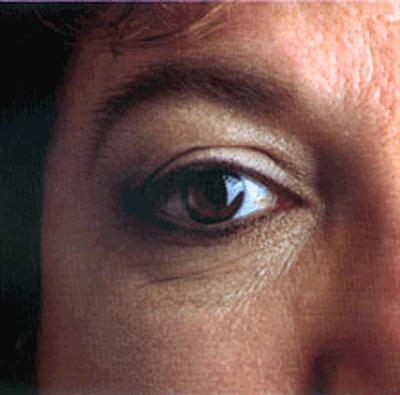There may be a way to restore normal vision in those who suffer from blindness using advanced computer technology. Dr. Sheila Nirenberg, a computational neuroscientist, and a team of researchers at Weill Cornell Medical College (New York, NY) have developed and tested a new prosthetic retinal device that has proven to restore sight in blind mice. The researchers say they have also cracked the code for monkey retina.

Image via National Eye Institute, National Institutes of Health
While prosthetics of the past permit users to see only spots and edges that allowed them to navigate, but could not restore vision, this device provides the code to restore normal vision.
Typically, blindness is caused by diseases of the retina that diminish photoreceptors and destroy circuitry. Despite the destruction, the retina is still able to maintain its output cells. Prosthetics manipulate these surviving cells.
Current retinal prosthetics work by implanting electrodes into the eye, while stimulating the ganglion cells with current. While this helps, it still only allows for limited visual fields.
Some methods being studied include increasing the number of stimulators in a human’s eye or using light-sensitive proteins to increase activity in the eye.
Dr. Nirenberg discovered that there was a key component missing in retinal prosthetics and other methods being tested.
“Not only is it necessary to stimulate large numbers of cells, but they also have to be stimulated with the right code, the code the retina normally uses to communicate with the brain,” said Nirenberg.
The retina receives a pattern of light which it converts into code, or as Nirenberg calls it, a “set of equations,” and these equations are converted into electrical pulses.
How it works
Dr. Nirenberg and her team used mathematical equations on a chip, or encoder, combined with a mini-projector. The encoder transforms images that come into the eye into streams of electrical impulses. The mini-projector then converts those electrical impulses into light impulses that drive light-sensitive proteins inside of the ganglion cells all the way up to the brain.
The team built two systems to be tested on mice. One system had the code and one did not. The system with the code had such great results that it was able to reconstruct images of faces, animals, and other test sights.
Dr. Nirenberg attributes the system’s success to two factors: the encoder and the stimulator. The encoder is closely able to mimic actual retinal performance when confronted with stimuli, and the stimulator is able to send the produced impulses up to the brain efficiently.
The team’s next steps will be to quickly design and test a device suitable for human use. Although it may be between five and seven years before we see anything like this in humans, two key ingredients are now in place, bringing us one step closer to curing blindness.
Story Via: Weill Cornell Medical College
Advertisement
Learn more about Electronic Products Magazine





